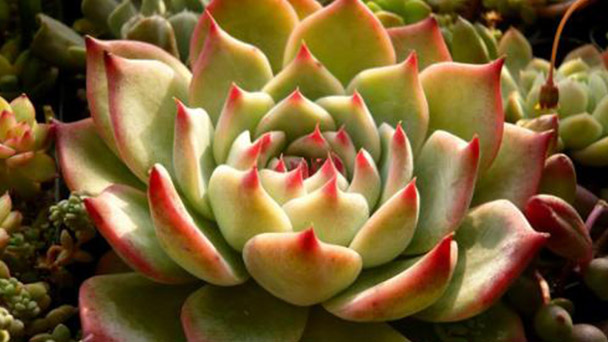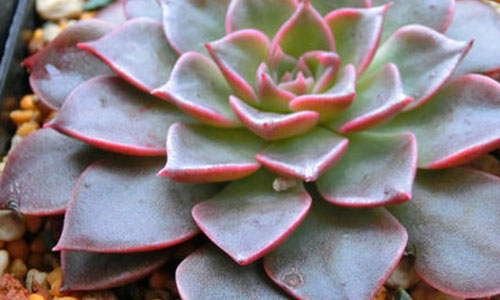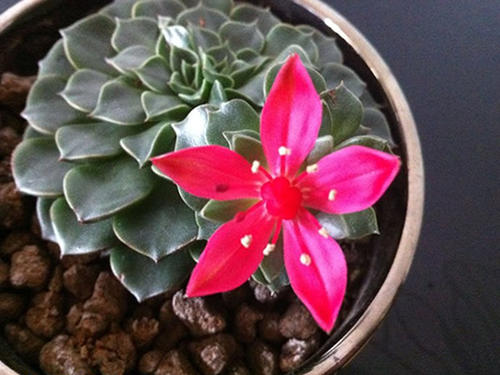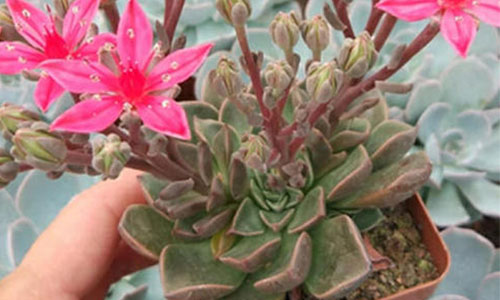How to Grow & Care for Graptopetalum Bellum
Written by Maggie
Oct 14 2021

Graptopetalum Bellum is a succulent plant in the shape of a lotus, from which its name is derived.It is like a tiny lotus flower growing in the earth. It is so cute that many people keep it at home because of its beautiful appearance. Do you know how to grow and care for Graptopetalum Bellum? As long as you get enough sunlight, water the right amount and keep the air ventilated, you can grow and care for it well.

1. Graptopetalum Bellum Soil Care
Like other succulents, Graptopetalum Bellum prefers a loose and permeable growing environment. For the soil, graptopetalum Bellum has a high water permeability. When we grow and care for Graptopetalum Bellum, it does not need much water, good water permeability is the only way to make graptopetalum bellum more beautiful. Peat plus volcanic rock or perlite is a good choice.
2. Graptopetalum Bellum Lighting Requirements
When we grow and care for Graptopetalum Bellum , enough sunshine is very important. Only when the sunshine is enough can Graptopetalum Bellum grow full and beautiful flowers. Lack of light during breeding can cause plants to grow unconsolidated and fail to bloom. Graptopetalum Bellum needs to be exposed to light all year round, but the midday sun in summer should be avoided.
3. Graptopetalum Bellum Watering
The most important aspect of Graptopetalum Bellum's diet is controlling the amount of watering. Graptopetalum Bellum doesn't need to be watered too much, just wait until the soil has dried up. Dry the environment is to let it grow more brilliant. When we grow and care for Graptopetalum Bellum in spring and autumn water every 3 ~ 4 days. Water every 2 days in summer. Do not water in winter.
4. Graptopetalum Bellum Temperature Care
Graptopetalum Bellum is vigorous and resistant to drought and high temperature as well as to severe cold. When we grow and care for Graptopetalum Bellum, the temperature is best kept between 5℃ and 35 °C. But in the summer, when it is very hot, it is important to maintain a good ventilation environment. Even in the winter when the temperature is low, it is not afraid. The temperature is better be around 10℃, and even if it is above 0℃ it can withstand.

5. Graptopetalum Bellum Growing Environment
Graptopetalum Bellum has a low requirement for ambient humidity, basically the drier the environment, the better the growth. Wet conditions can cause the leaves of Graptopetalum Bellum to become sparse and loose, even affecting their flowering. So when we grow and care for Graptopetalum Bellum, make sure you have a dry, airy environment.
6. Graptopetalum Bellum Pruning
When we grow and care for Graptopetalum Bellum, it does not need pruning, but it should be pruned properly after flowering. Especially in the flowering time has passed, when its flowers wither, it is necessary to cut the stem, otherwise not only not beautiful, but also will absorb the plant nutrients.
7. Graptopetalum Bellum Fertilizer
Graptopetalum Bellum doesn't require much in the way of nutrients, and only requires a little fertilizer every now and then during the spring and autumn. When we grow and care for Graptopetalum Bellum, low nitrogen, high phosphorus and potassium compound fertilizer is very suitable, 20 ~ 30 days to apply fertilizer on the line. In hot weather in summer it is not suitable for fertilization. In winter it is too cold and is not suitable for fertilization.
Graptopetalum Bellum Propagation
Graptopetalum Bellum Cutting Propagation
To propagate Graptopetalum Bellum, cutting can be done during its growing season. First of all, choose the full meat, healthy and good growth of the integrity of the leaves, break off by hand, tile to the surface of the sand, this is the completion of cutting.
But after cutting to ensure that the sandy soil in a long time in a slightly wet state, and the environment can not be too dry, but also to ensure that the temperature is above 18 degrees. After a while, new shoots will sprout from the crack. When these are a little bigger, they can be cut off and planted separately.
Graptopetalum Bellum Division Propagation
The best way to do this is in the spring and fall. The specific method is the same as most other flowers. Dig out the whole plant first, and then choose the ramets that are strong and full of growth to plant again.
But when digging the mother plant, we must be careful not to hurt its roots, because once the roots are injured, it will not be able to absorb nutrients from the flower soil, which will lead to the new plant can not grow.
Graptopetalum Bellum Sowing Propagation
Although this method is easy, it is not easy to collect seeds, because if the Graptopetalum Bellum is not properly maintained, it may not flower, and if the plant does not flower, the seeds cannot be collected.
If there are seeds available, you can choose to plant them in the spring, but it takes a long time to germinate. This requires patience. There is nothing more important about sowing seeds, just like most plants. But make sure the environment is warm.
Latest Updated
- Benefits of Bugleweed - 7 Science-backed Health Benefits
- Bugleweed Dangers & Side Effects - Is It Poisonous?
- How to Plant Evergreen Trees - What You Should Know
- When to Plant Evergreens - Grow Guide for Evergreen Trees
- 12 Wonderful Evergreen Shrubs for Your Garden
- 12 Popular Evergreen Plants with Pictures for Beginners
- When And How To Prune A Lilac Bush Like a Pro
- How to Grow & Care for Lilac Vine (Hardenbergia Violacea)
- Japanese Lilac Tree (Syringa Reticulata) Care & Propagation Guide
- Shumard Oak Pros and Cons - What to Know
Popular Articles
- Winter maintenance of Antirrhinum Majus
- How to Grow Terminalia Mantaly Tree
- How to Grow and Care for Crossostephium Chinense
- How to grow Antirrhinum Majus in spring
- Peristeria Elata (Dove Orchid) Profile: Info & Care Guide
- Underwatered Snake Plant (Sansevieria Trifasciata) - Signs And How To Fix
- How to Care for Brazilian Jasmine Plant (Mandevilla Sanderi)
- How to Grow & Care for Graptopetalum Purple Delight in Summer
- Rosa Chinensis (China Rose): Plant Growing & Care Tips
- How to Care for Baby Sun Rose (Aptenia Cordifolia)